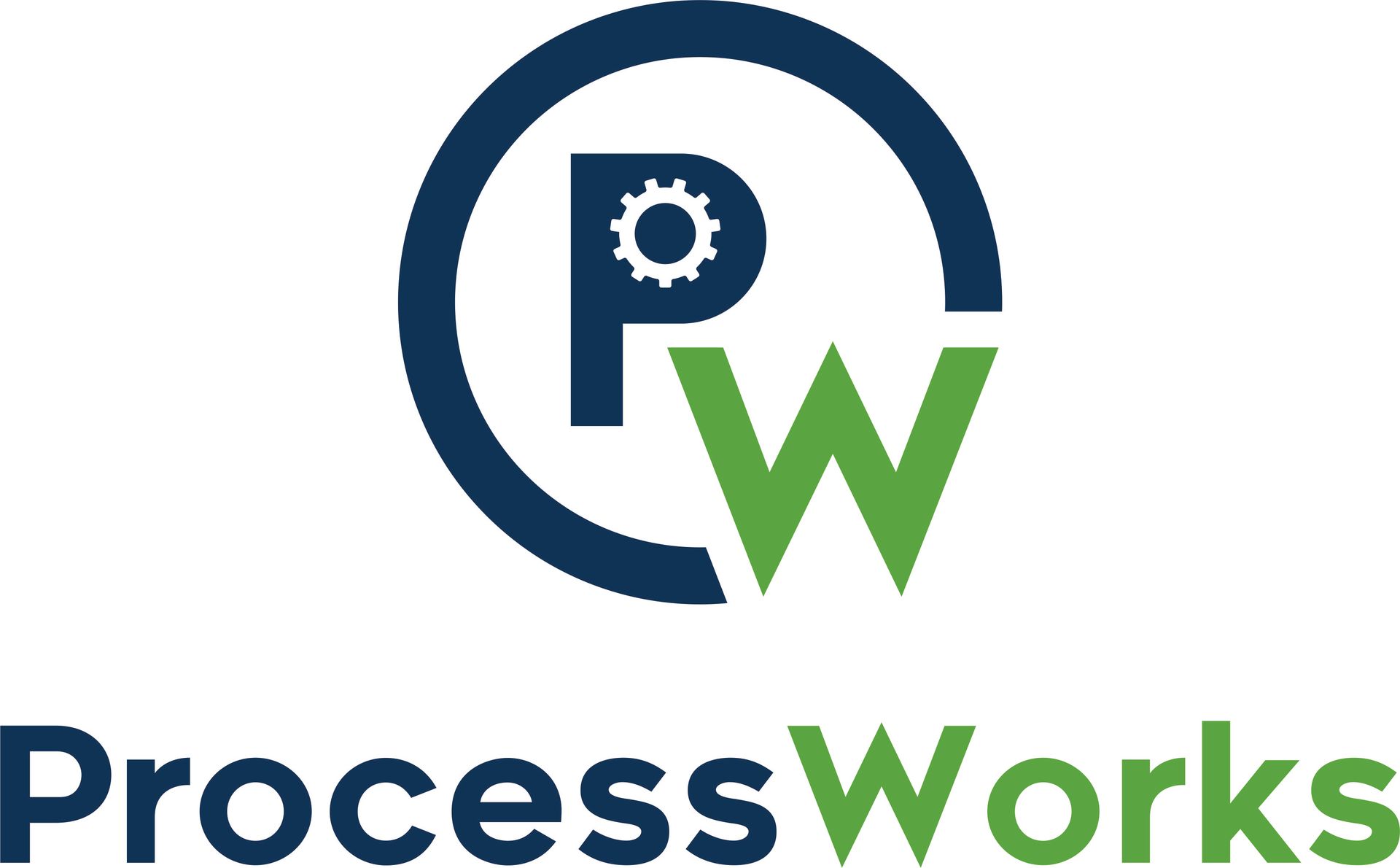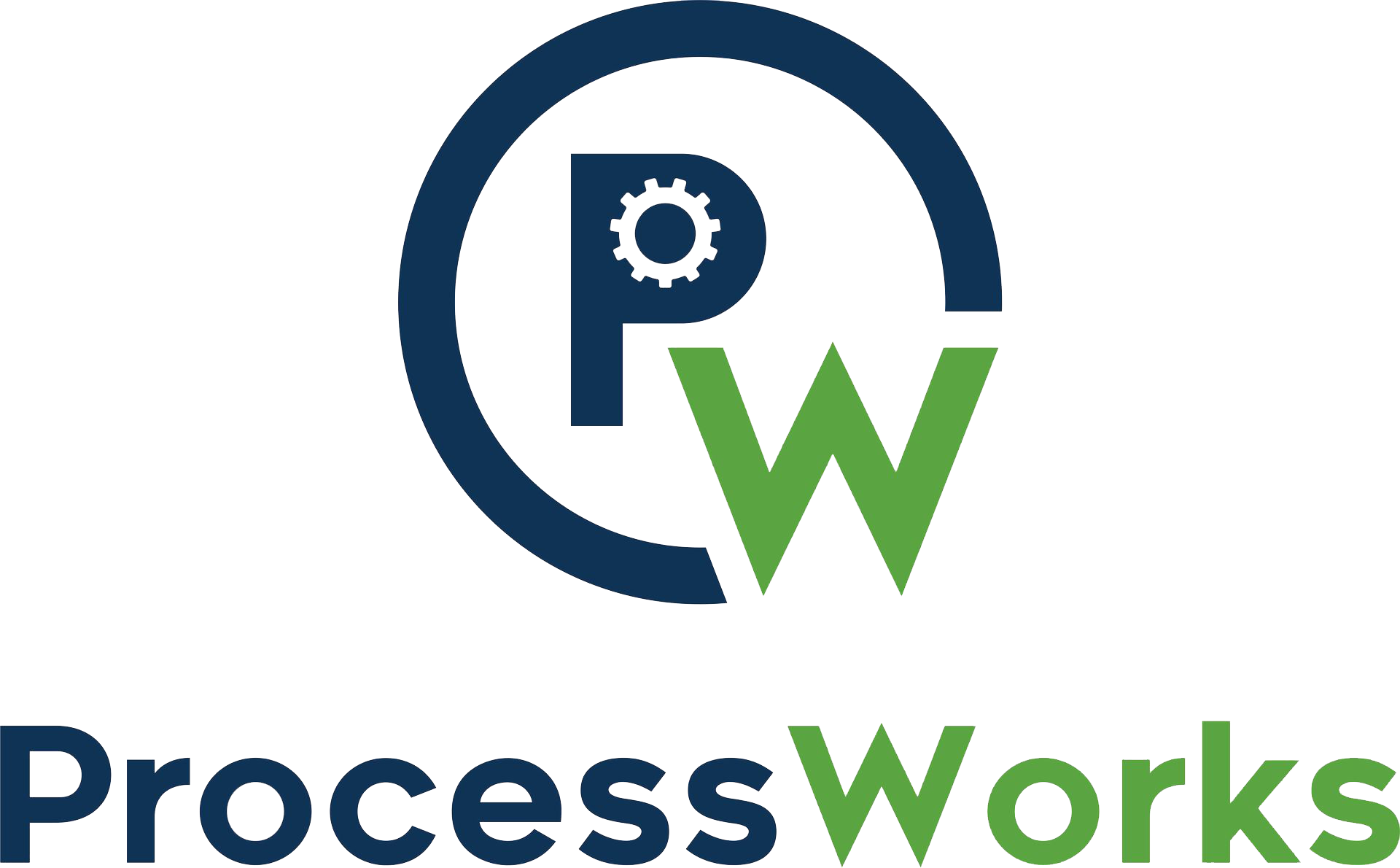Process Works™ Blog

By Sarah Halperin
•
01 Apr, 2024
In the bustling landscape of entrepreneurship and business management, it's easy for us to get lost in the sea of tasks, goals, and aspirations. Often, our objectives appear dauntingly vast and nebulous, leaving us feeling overwhelmed and directionless. One strategy to utilize in such moments is the concept of narrowing our scope. While the idea of shrinking our purview can seem intuitively unproductive, in the right situation it can transform seemingly insurmountable goals into manageable milestones, propelling us toward success with clarity and purpose. At the heart of this focus lies the 80/20 rule, a principle that has proven to be a game-changer for businesses worldwide. This rule (sometimes referred to as the Pareto Principle) suggests that roughly 80% of outcomes result from 20% of causes. In the context of business, it means that a minority of efforts often yield the majority of results. By identifying and prioritizing this crucial 20%, businesses can streamline their efforts and maximize efficiency. Imagine a scenario where a company is struggling to improve its customer satisfaction ratings. Initially, the goal may seem overwhelming, encompassing a myriad of factors such as product quality, customer service, and pricing. However, upon closer examination, the 80/20 rule reveals that a select few aspects significantly influence customer satisfaction. Perhaps it's the responsiveness of customer support or the reliability of product delivery. By focusing on optimizing these critical factors, the company can drive substantial improvements in its overall performance. The beauty of the 80/20 rule lies in its ability to cut through the noise and identify the most impactful areas for intervention. Rather than spreading resources thinly across all facets of a problem, businesses can concentrate their efforts where they will yield the greatest returns. However, staying true to this focused path is easier said than done, especially in a world filled with constant distractions and one-off scenarios. It's all too easy to veer off course, chasing after Shiny Objects or addressing minor issues that offer little long-term value. We know succumbing to these distractions only serves to dilute our efforts, but in practice staying on target is often more difficult than it seems. It takes practice to cultivate the discipline needed to combat the temptation of chasing the Shiny Object. Resistance can be difficult at first, and like so many other things those muscles build over time and with consistent use. Whether it's through regular goal-setting sessions, strategic planning exercises, or ongoing performance evaluations, maintaining clarity of purpose through steady repetition is essential to staying on track. Embracing the 80/20 rule also requires a willingness to adapt and iterate continuously. As market dynamics shift and customer preferences evolve, the landscape of opportunity is ever-changing. By regularly reassessing priorities and fine-tuning strategies based on real-time feedback, we can ensure that our focus remains sharp and relevant in an increasingly competitive environment. Looking at tasks through a narrower lens is a great way to get ourselves on track to achieving otherwise nebulous goals with both precision and efficiency. By honing in on the critical few factors that drive the majority of outcomes, we can unlock new levels of productivity and success. However, staying true to this focused path requires discipline, adaptability, and a relentless commitment to continuous improvement. But if we are able to stay the course, the rewards speak for themselves.

By Sarah Halperin
•
27 Feb, 2024
In some business environments, the simple use of the word Accountability can be cringe-inducing. We know that in the dynamic landscape of modern business accountability is crucial, standing as a cornerstone of success and sustainability. But many don’t understand that accountability is not merely about assigning blame; rather, it's a commitment to transparency, integrity, and continuous improvement. So why do we talk about accountability when we talk about process improvement? First, we know individual accountability enhances organizational productivity. When individuals are held accountable for their actions and outcomes, the overall productivity and health of the organization flourish. Accountability fosters a culture of ownership, where employees can take pride in the work they do. Knowing that their contributions directly impact not just their own success but the success of the organization, individuals are motivated to perform at their best, innovate, and collaborate effectively with colleagues. Moreover, accountability cultivates trust among team members, as everyone relies on each other to fulfill their responsibilities and contribute to shared goals. Similarly, when all participants in a certain process know what they will be held accountable for, they are more likely to excel in that process. Documenting these processes allows them to become guideposts for accountability within an organization. They provide a clear roadmap detailing the steps, responsibilities, and expectations associated with the process while leaving no room for confusion or ambiguity. Employees know what's expected of them, how to perform their duties effectively, and who to turn to for support or clarification. The fact that assistance is available doesn’t mean that the participants in the process can easily pass the accountability buck, though; at the heart of accountability lies the principle that only one person can be held responsible for each process. This clarity is critical when doing any sort of process work, because if everyone is accountable for the process, then no one is. When ambiguity exists regarding who is truly accountable tasks are more likely to slip through the cracks, leading to more errors, delays, and frustration. By assigning singular ownership to specific processes, not only are these potential obstacles avoided but individuals are also empowered to take ownership, make decisions, and drive results for themselves. This is where it gets tricky: Only one person can be held accountable for each process, but accountability is still ultimately a team sport. In a collaborative environment, team members support each other, hold one another to high standards, and celebrate collective achievements. When accountability is woven into the fabric of the organizational culture, individuals feel empowered to hold themselves and their peers accountable, fostering a sense of mutual respect and camaraderie. Collective accountability also promotes transparency and openness; if your team is empowered to communicate openly about challenges with their colleagues, they may be more open to collaborating to overcome those obstacles as well as being more likely to seek out feedback. Accountability should not be treated as a weapon to be feared. Rather, it should be treated as a tool that, when wielded with skill, can help propel an organization toward excellence.

By Sarah Halperin
•
12 Feb, 2024
Growing up, I was always a fairly non-confrontational person. I didn’t like pressure, didn’t like conflict, and was happier letting situations I was less than happy with blow over rather than stirring the pot. As I grew into adulthood and into my career, however, I began to see conflict for the opportunity it could be, rather than the discomfort I had always shied away from. In business sometimes we have a tendency to form Mutual Admiration Societies – we like our coworkers, we have a decent culture, and where no massive issue exists why should we try to create one? The problem with this line of thinking is the inevitable stagnation that follows it. When there is no pressure to improve, we don’t. Not because we don’t want to, but because we don’t know how. We are all limited by our own perspectives, and sometimes reality checks are exactly what we need to find the direction in which we need to grow. But those reality checks often come in the form of tough conversations. They can be garnered through feedback, which I wrote about previously, or they can come from conflict. In the workplace, conflict often occurs when an issue is left to simmer for too long. If you dig into most Mutual Admiration Society workplaces you will find that things are often not as rosy as they seem, and there may very well be an elephant or five in the room that no one wants to be the first to bring up. When these issues are brought to the surface though, a new influx of productivity can be initiated in a way that hasn’t been seen in the organization for quite some time. This is not to say all conflict is good conflict, though. A culture of challenging each other and honest constructive criticism can be a good thing, but it can conversely fall into its own pitfalls. Conflict for conflict’s sake is rarely productive. The same can be said for debates driven by emotion rather than logic; and even though many disagreements begin in a logical place, it is easy to fall into the trap of letting emotional testimony supersede the initial logical point. In this way getting into the wrong kind of dispute – or arguing for too long – can do more damage than if the issue was never brought to the forefront in the first place. Like most things, it’s about trying to find balance. Conflict is not something to be afraid of – in many cases it should be embraced. But limiting arguments to facts and logical reasoning rather than emotionally charged subjectivity or worse, personal attacks, will mean that your debates will stay productive while the people on both sides still maintain mutual respect. And mutual respect, rather than mutual admiration, will take an organization far.

By Sarah Halperin
•
29 Jan, 2024
I read an article recently about how businesses looking to make company-wide improvements should focus their energy on their systems, not their people. The argument the writer was making is that, though some of the symptoms of the issue may subside somewhat, when macro-level problems are addressed on a micro-level scale the root issue will remain. This is an incredibly powerful point, one that a lot of organizations can learn from understanding, but I fear it doesn’t tell the whole story. Systems do not exist in a vacuum. When a company implements a new system – whether it’s a new CRM software, safety policy, or a series of customer service procedures – that new system relies on people using it correctly to function to its maximum effectiveness. In most systems, there is a learning curve: it takes a while to learn how all of the bells and whistles operate in a new software system, and there may be questions on the rationale behind some of the items on a new safety checklist. The idea, however, is that given adequate time and experience, these systems will prove themselves as worthy time and capital investments if they yield the desired results. Right? Here’s the thing: It doesn’t matter how close to perfect your system is if the people working in the system are not, whether willfully or not, using it to its full potential. The system is only as good as the results that it produces, after all; and if you implement a new system within your organization and, after the anticipated learning period, you still aren’t seeing the results you’re looking for, the first conclusion many leaders would draw is that the system is flawed. However, as with most things, the answer is not usually this black and white. And to make things more complicated, there is another red herring conclusion that can also be drawn from this situation: that the people who aren’t using the system optimally are the wrong people for the job. This assertion on the other end of the spectrum is usually equally false; the truth, as it usually is, lies somewhere in the middle. But to find that truth, we must first admit two things to ourselves regarding our organization: 1) There are no perfect people. 2) There are no perfect systems. With this knowledge in hand, you can move forward knowing that the best thing for your organization is to find a system that synergizes with your people. If you have a strong sales force of field-loving professionals who excel in client relationships but have complained about the changes from the last three company-wide software updates, a cutting-edge CRM with an interface that is known for its steep learning curve (even with its possible outstanding utility) may not be the right fit. Similarly, that same sales force might rave over an easy-to-use (though somewhat bare bones) CRM that allows them to track their progress without distracting them too much from where they want to be spending their time: with their prospects and clients. This same bare-bones CRM may not work for a company with a longer, more intricate sales cycle, however; and you can probably see what I’m getting at from here. When you find the right system for the right people, though, that’s when the magic happens. Because what you’ll find is that when you make the match correctly, strong people and strong systems make each other stronger. That simple and straightforward CRM will allow your sales team to better manage their time and resources, which will make sure they are devoting their energy to where they shine and enjoy their jobs the most, which will lead to establishing best practices for how to incorporate their CRM time into their day so they can continue to improve, and so on. You can see how momentum builds from there. So instead of focusing on the micro or the macro, shift your attention instead to finding the right system for your team. Because once that synergy is achieved, it will be full speed ahead.

By Sarah Halperin
•
18 Jan, 2024
Most of us have arenas in our lives where we feel that we are experts. We have taken classes, spent countless hours honing our skills, and made several very educational (if humbling) missteps to led us to the point where we feel confident in our expertise, knowing all that it has taken us to reach this place. For many of us this sense of accomplishment exists within the confines of our careers, but it can exist outside of our professional lives as well. As we continue to expand our skillsets and refine our crafts, however, it is common for us to reach plateaus in our journey. While we like to believe that we are all constantly hungry and pushing forward, we may find (guiltily) that these plateaus can be a surprisingly welcome, if unexpected, respite from our continual push for improvement. And if we don’t acknowledge this, we find ourselves becoming more likely to stay on these plateaus. This gets us in the same mindset that I wrote about last month in the “If It Ain’t Broke…” blog, where we begin to accept “good enough” as the status quo, and progress in our quest for improvement begins to stall. One good way to try to tackle this situation is seeking input from a person outside of your inner circle - someone who you have enough of a rapport built with that you can trust the person to be honest, but not someone so ingrained in your day-to-day that that person’s perspective is too similar to your own. The person you approach may also seek reciprocity as they look for outside input on some of their own projects and ideas. Once the meeting is established and clearly set expectations of what you hope to achieve are defined, it is helpful to compile a list of issues to bring to the meeting that you would like your peer’s insight on. It is important to maximize the impact of the time invested for both parties involved, and having an idea of an agenda helps with this. In an ideal world, every time these kinds of meetings happen both parties share wisdom, learn from each other, and walk away with more knowledge and more motivation to continue progress than they did when they walked in. In practice, this is not always the case – when exposing oneself to the possibility of constructive criticism, things are often said that are not easy to hear. This is why it is critical to assess your mental capacity to take in feedback that may be perceived as negative before requesting the meeting in the first place. We like to believe we are on a consistently progressing forward trajectory, but in truth sometimes we are not ready to leave the plateau. Stress outside of work, mounting additional responsibilities, and burnout can all be reasons to postpone this conversation, among others. Timing this conversation poorly can lead to it, at best, having no impact and, at worst, undermining your confidence as well as tarnishing your relationship with the person you sought out. Experts, no matter how skilled, are always capable of improvement. Seeking to maintain constant progress is noble, and seeking outside feedback is a great way of doing that – but also understand that not everyone is always ready to have these conversations. Though when the timing and mindsets are right, they can be a tremendous help to igniting momentum that has been lost.

By Sarah Halperin
•
03 Jan, 2024
There is a parable of three teachers, standing before three classes of students, each with a pile of bricks in front of them. The first teacher instructs his students to take each brick and stack them, making the largest piles possible. The students obey. The second teacher asks her students to each pick up a brick and follow her carefully laid out instructions, directing the students to place the bricks according to a diagram she had created. The students obey, and after a while they build a small, cubic structure. The work is imperfect, and the teacher is displeased. The third teacher motions to the pile of bricks and asks his students to pick only the best bricks, the ones of the strongest shape and color, and the ones that appeal to each student the most. Once each student had loaded up a wheelbarrow with the carefully chosen bricks, the teacher led the students to a level spot where they began to discuss their plans for building. The other two classes continued to craft their stacks and their cubes, and finally, the third class began to build. As the third class was building, the teacher asked questions about the placement of the bricks; he encouraged his students when they made wise choices, and he made suggestions when his students needed assistance. At the end of the day, three structures stood against the sunset: one of massive piles of bricks, one of increasingly perfect cubes, and one beautiful castle. This story is a fantastic illustration of what it truly means to teach. Teaching, ultimately, is not about simple step-by-step replication, it is about leading others to think and create in ways that are unique and important to them, so that they may take personal ownership of their own skills. Teaching is at the heart of the most effective training, rather than simply directing individuals to follow procedures. In the parable, the first teacher gave simple instructions that his students were able to follow – and thus they were able to complete the task assigned to them – but accomplish no more. This is the issue with simple order direction: the trainee will learn how to perform the task in which they are instructed, but have no way of applying their skills beyond the scope of that task. Nor should training focus too much on rigid replication, nearing perfection; this was the aim of the second teacher, and though the students got increasingly better at making cubic structures, they found themselves in the same predicament as the first group of students; they honed their skills greatly on one specific task, but were not able to apply those skills in any broader sense. They became a talented group at building cubes, but nothing more. In training, we aspire to be like the third teacher for several reasons. The third teacher was the only teacher who did not instruct his students to start building right away, instead urging them to use their own judgment to find bricks of quality. He then led them to a place where they could build effectively, but before they did he facilitated a discussion in which they worked together to coordinate what they wanted to create. In doing so he set his students up for success by using his own knowledge to guide them to a place where they could build successfully, and he facilitated them to make their own choices about what it was they wanted to create. The third teacher guided his students, rather than giving them simple orders or handing out strict commands. Preparation, cooperation, and encouragement were the tools of the third teacher. When the people we train are given agency over their own tasks they are more likely to commit themselves to their work with pride and enthusiasm, which is what every manager wants to see out of their team. Teaching is not about laying out simple instructions and making the student complete the task at hand. To teach means to make sure each student understands, internalizes, and personalizes the tasks in front of them. Mediocre trainers give instruction. Superb trainers unlock passion.

By Sarah Halperin
•
15 Dec, 2023
When operating in our businesses, many of us find ourselves falling into a rhythm after a time. We come in, turn on our computers, check our email, make coffee, see what fires we need to put out, and proceed accordingly. Humans tend to be creatures of habit, and that’s why day in and day out we tend to follow the same routines. Routines come with certain unintentional consequences. Even if we grumble to ourselves about how things could be better, we aren’t sure where to start to improve them because those kind of improvements don’t fit into our existing routine. The path of least resistance would have us stay the course, to keep doing what we’ve been doing, even if deep down we have a sneaking suspicion that there may be a better way. This “good enough is good enough” attitude can lead to many suboptimal results, including missing individual goals as well as certain departments, or even whole companies stagnating entirely. No one wants this outcome, but when we continue to embrace what we’ve always done because, well, we do it that way, sometimes we unknowingly push ourselves into these situations. Change is uncomfortable and can cause friction between differing personalities and management styles. But as many of us already know, progress doesn’t often come easy, and the first step in getting yourself (or your company) out of a rut is often to open yourself up to the possibility that things may not be being done as well as they can be. It’s a humbling thought for many, and also the place where progress starts to happen. This is where the fun begins! If you’re willing to set aside the presumption that “The Way It Is” is the best way that things can be, you may begin to realize just how much better your situation can get with a few intentional, productive changes. Implementing these changes can be a struggle; that is why it’s important to get the entire leadership team to understand what changes need to be made, how they will be made, and, crucially, to support one another and the changes themselves while adjustments are happening. Change is never easy, but can be tremendously rewarding. And for many companies – if progress is what they’re searching for – change is mandatory. And it all starts with being open to the possibility.
© 2024
ProcessWorks™

